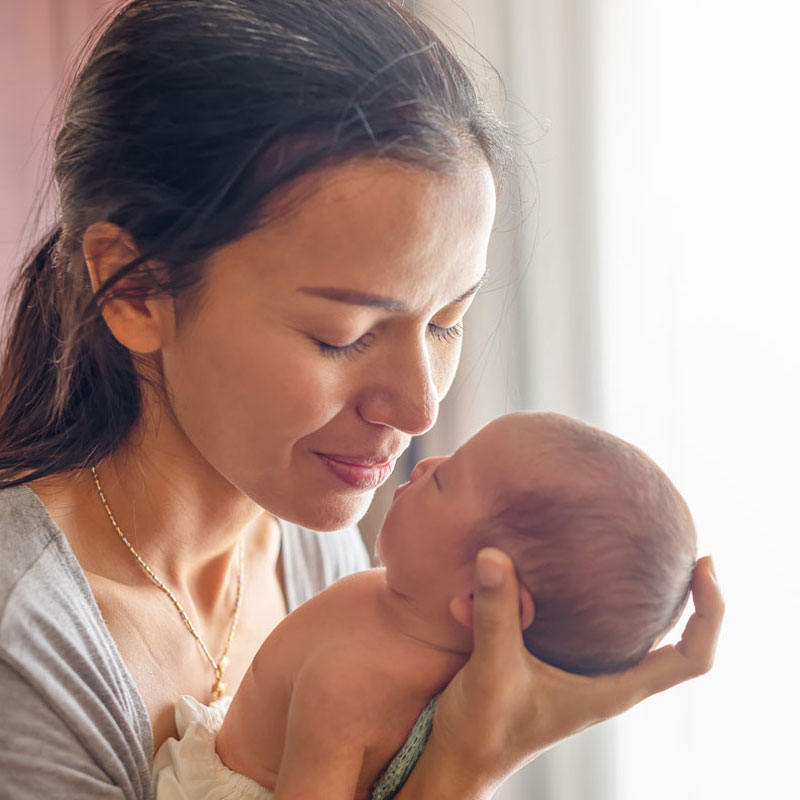About 80% of Congenital Diaphragmatic Hernia (CDH) cases are diagnosed during pregnancy; most commonly at the 20-week scan. It is understandable that many parents will grieve the healthy pregnancy and birth they had envisaged. It is important to remain hopeful and feel assured that advances in CDH medical knowledge means a high level of care for babies and parents during the pregnancy and birth stages.
Pregnancy and birth
Pregnancy
If your baby is diagnosed with CDH during pregnancy, your pregnancy will be closely monitored and determined as high-risk. In actual fact, the baby is relatively safe while inside the mother’s womb as the baby isn’t required to use their lungs to breath in air.
During pregnancy mothers will have extra ultrasounds where doctors will: check what abdominal organs are in the chest cavity, monitor the size of the baby’s lungs, monitor the baby’s heart, measure the baby’s growth, and check positioning for birth. Depending on where you live, you may be required to have your pregnancy monitoring and care moved to a hospital that has experience dealing with CDH pregnancies.
Birth
A normal vaginal delivery is possible for many CDH pregnancies. Sometimes vaginal birth is recommended as it helps to compress fluid from a baby’s lungs. It is also worth considering that the recovery time from a vaginal birth may be shorter than that of a C-section, which can affect when a mother is able to visit her baby post birth.
Usually doctors will recommend a planned induction for birth around 38–39 weeks. This is so that a team of medical professionals is prepared in advance for the arrival of the baby, and so that a NICU bed is secured in advance where possible. It is not compulsory to have a planned induction, and of course sometimes babies come early. It is important to discuss your birth plan with your medical team and to make decisions that you feel comfortable with.
Once your baby is born, there will be a team of doctors who will put your baby straight onto a breathing machine. This is known as the process of intubation. It is unlikely that your baby can be held or have immediate skin-to-skin contact as it is important to ensure the baby’s body receives oxygen as soon as possible. This process should be discussed with your medical team while you are pregnant. For babies who have undiagnosed CDH, it is likely that post-birth breathing difficulties will be apparent – from here medical staff will intervene to ensure the baby’s body is oxygenated.
Coming to terms with a CDH pregnancy and birth is an emotional time for parents – especially mothers. It is understandable to feel sadness and grief and it is important to undertake self-care. This may be in the form of counselling or therapy, speaking to friends or family, getting in touch with our CDH community, journaling, or taking time away from work. For each mother, father, parent, and family, the feelings and needs will be different.
Useful resources
Download: Expecting a baby with CDH booklet
Download: Questions for medical professionals: During pregnancy
Download: Questions for medical professionals: Choosing a hospital
Download: Preparing your home for baby
Download: Questions for medical professionals: Birth and labour
Contact us
Our team can add you to our private peer-support groups, discuss financial assistance, and help you find other services. Send us an email and let us know how we can help you.
Explore the website

CDH information

Online support groups

At the hospital

FAQs
Subscribe to our e-newsletter
Donate
We are the only Australian charity supporting families with a child diagnosed with CDH.
We rely on the generosity of our donors to deliver our services. All donations over $2.00 are tax deductible.

